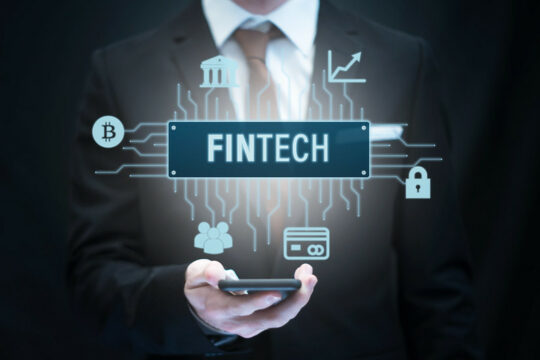This bank-less lending platform is a CeFi-DeFi bridge for lending against Real-World Assets (RWA) and Non-Fungible Tokens (NFTs) that enables its users to leverage the US$4 trillion worth of RWAs on its decentralised finance (DeFi), framework.
Blockchain technology has given birth to a secure and democratic alternative to existing traditional systems, which has further led to the development of web3 that includes various verticals like DeFi, decentralised applications (dApps), asset tokenisation, NFTs, etc. These new features have facilitated blockchain in going mainstream but have been ailed with a few shortcomings.
Read more: {Blockchain watch: IoTeX} An ‘Internet of Trusted Things’
Brú.Finance, aims to improve upon these shortcomings, and in the process, assist the unbanked, small-scale owners and borrowers.
The Tech Panda spoke to Ashish Anand, Founder and CEO of Brú.Finance about how they are bridging the gap between the real and the crypto world through tokenised asset backed lending.

Ashish Anand
We focus on assisting the unbanked, small-scale owners and borrowers by linking a spate of RWAs such as agricultural commodities, real estate, precious metals, receivables, etc. to the DeFi sector through the mechanism of RWA-backed NFTs and providing security and stability to the user
“The RWA valuation is almost US$250 trillion, whereas the DeFi market value is hovering around just US$100 billion. The glaring gap between the RWA market and the digital assets market is what we aim to bridge,” he says.
Brú.Finance is a DeFi lending protocol that enables small-scale, unbanked and underbanked users to borrow or lend against RWAs.
“So far, the DeFi space has largely been driven by speculative crypto assets. At Brú.Finance, we focus on assisting the unbanked, small-scale owners and borrowers by linking a spate of RWAs such as agricultural commodities, real estate, precious metals, receivables, etc. to the DeFi sector through the mechanism of RWA-backed NFTs and providing security and stability to the user,” he explains.
How Linking RWAs to the DeFi Sector Benefits Consumers
RWAs are credible, traceable, and tangible assets that people have experience dealing into, investing into, or borrowing against since ages. The current DeFi transactions involve highly over-collateralised crypto assets that are subject to rapid market volatility and variable interest rates.
Through our underlying blockchain technology, the process is decentralised without the need for tedious paperwork or intermediaries and thus open and accessible to all
Anand explains that Brú.Finance has introduced a bridge between the real and the crypto world through tokenised asset backed lending that allows users to borrow or lend against RWAs without being exposed to the volatility of crypto.
“Through our underlying blockchain technology, the process is decentralised without the need for tedious paperwork or intermediaries and thus open and accessible to all. Asset tokenisation further entails secure, immutable, and automated transactions that can prevent the entry of fraudulent and corrupt practices,” he explains.
What They Do
The platform is a DeFi lending protocol that allows users to lend and borrow against existing RWAs through on-chain RWA NFTs representing multiple asset classes such as agricultural commodities, real estate, precious metals, receivables, etc.
They are able to achieve this level of accessibility through their blockchain FinTech arm, Whrrl, that tokenises the commodities stored in warehouses, thereby creating a person-less and paperless system of real-time lending.
We enable a secure, authentic, and stable DeFi lending and borrowing protocol against commodity-backed NFTs that are already a part of our tokenisation platform and hence, are authentic and verifiable
“Through Brú.Finance, we enable a secure, authentic, and stable DeFi lending and borrowing protocol against commodity-backed NFTs that are already a part of our tokenisation platform and hence, are authentic and verifiable,” says Anand.
“Brú.Finance also uses credible third party market data and a combination of centralised and decentralised oracles to value and assay the quantity and quality of the asset backed NFTs,” he adds.
What is Whrrl?
Whrrl, Brú’s blockchain FinTech arm is a well-organised and successful on-chain lending platform that stands at the platform’s backend. A blockchain FinTech lending platform for commodity finance, Whrrl allows Indian farmers to put their harvest in the custody of a warehouse and borrow money against this warehoused crop.
Whrrl was established with the aim of solving the pertinent problems of commodity finance as well as providing an inclusive and safe financial platform for small and medium-scale farmers
This innovative product helps farmers avoid distress sale of their crop to middlemen, helps them tide over temporarily low prices just after harvest, provides them liquidity, and then helps them get a much higher price, thereby helping avoid socio-economic problems like exploitation, exorbitantly high-interest cost lending from money lenders, resulting in debt trap and on occasion farmers’ suicide menace.
“At Brú we are leveraging these on-chain tokenisation and lending capabilities to use DeFi as a change agent connecting real world economic activity to DeFi. Our blockchain FinTech backend creates a direct funnel between DeFi lending capital and retail consumers without the need for intermediary platforms or structures like securitisation that have been proven to be harmful to financial sector earlier,” says Anand.
Inspiration & Origin
Anand recalls that way back in 2018, much before the term DeFi itself was coined, the founders of Brú.Finance realised the need of a borrowing mechanism against tokenised RWAs.
This led to the creation of Whrrl, their blockchain warehouse receipt financing platform that tokenises commodities deposited in warehouses and allows farmers, traders, etc. to lend or borrow against these deposits.
Read more: {Blockchain watch: Biconomy} Reducing friction between blockchain-based apps and end-users
“Whrrl was established with the aim of solving the pertinent problems of commodity finance as well as providing an inclusive and safe financial platform for small and medium-scale farmers,” Anand says.
“Brú is an extension of the same blockchain platform but with the objective of using a bank-less DeFi protocol as global pool of capital serving the unbanked and underbanked in emerging markets,” he adds.
The Brú.Finance USP
Brú.Finance recognises a few competitors in the DeFi market such as Centrifuge and NAOS Finance but Anand insists that Brú excels with its real world traction, its back-to-back integration between DeFi and real world through a direct lending blockchain fintech arm.
“Lacking end-to-end tokenisation and lending platforms, our competitors are just intermediaries between DeFi lending protocols like Maker DAO and real-world entities. This is the very antithesis of decentralisation and its promise to remove intermediaries,” says Anand.
The challenges of commodity financing in India were recognised by us early on, and we have leveraged blockchain technology to solve those problems, both for the borrowers as well as the lenders
The platform’s offerings include assets that are already a part of the traditional financial system. Their blockchain FinTech arm is fully equipped to leverage these and connect them to the DeFi sector.
“The challenges of commodity financing in India were recognised by us early on, and we have leveraged blockchain technology to solve those problems, both for the borrowers as well as the lenders,” he adds.
Brú.Finance also provides a DeFi mechanism that is stable, depends on real-world assets rather than digital assets predominantly existing in the crypto world.
Growth Story
Brú Finance’s efforts in the blockchain FinTech space, through Whrrl, are well recognised and supported by government entities, banks/non-bank lenders, 000’s of platform users and prestigious international organisations such as the UNDP’s SDGia, MassChallenge USA, University of Toronto’s CDL, ETHDenver, Microsoft, et al.
“Brú’s success story in social impact finance to farmers of India using blockchain is already being taught as a case study in the most prestigious business school of India, IIM-Ahmedabad. Our work has won accolades across the globe, from both TradFi and Web3 ecosystems; from organisations like Binance, ETHDenver, Polygon, Indian Banks’ Association, DCB Bank, FICCI, ITPO, and Indian Merchants’ Chamber for innovative usage of blockchain technology in facilitating lending against commodity backed NFTs,” Anand says proudly.
This is still just the beginning, and we are gearing up to create a world class global TradFi-DeFi protocol with operations transcending the continental boundaries
The startup has successfully tokenised commodities worth US $500 million on its platform, thus generating NFTs backed by RWAs to the tune of half billion dollars. Further, they have received warehousing financing limit to the tune of US$330 million from their TradFi lending partners that Anand says they will keep using to benefit Indian farmers.
“This is still just the beginning, and we are gearing up to create a world class global TradFi-DeFi protocol with operations transcending the continental boundaries,” he adds.
Future Plans
With its robust blockchain fintech arm that engages into tokenisation and direct lending, Brú.Finance is aiming to reach all nooks and corners of global south to provide secure and open lending and borrowing mechanisms to the world’s neediest.
Anand says that as more and more investors are entering the DeFi space, there is a need to leverage the RWA market to provide numerous diversified and cost-effective investing options. Additionally, the platform is working towards expanding their asset classes to include gold loans, mortgages, equities, etc.
We will be serving the unbanked, the underbanked, farmers, women, and small businesses by channelising yield-hungry capital from the global north to emerging markets using the force of DeFi
“We hope to use blockchain technology for social impact across the globe and are steadily working to expand our target market to include geographies beyond India,” he says.
“A mission-driven organisation, Brú.Finance will be a global DeFi-TradFi bridge to reckon with in the near future. We will be serving the unbanked, the underbanked, farmers, women, and small businesses by channelising yield-hungry capital from the global north to emerging markets using the force of DeFi. That’s what the future beckons for Brú.Finance,” he adds.












